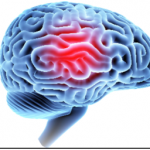Brain damage occurs when the brain sustains either a traumatic injury, such as a blow to the head, or a non-traumatic injury, as in the case of a stroke. Because the brain cannot heal itself as other parts of the body do, recovery from a brain injury can be challenging. Restored functionality can depend on individual symptoms and circumstances surrounding the injury.
Here, we’ll take a closer look at brain damage, including its common causes, symptoms, and treatments.
Common Causes of Brain Injury
Traumatic brain injury (TBI) is typically caused by a violent blow to the head or a jolt to the body. The condition can range from mild to severe in nature. TBIs may occur as both closed head injury, in which an outside force causes injury but doesn’t penetrate the skull, and penetrating injuries, in which a sharp object causes an open head wound. Falls, gunshot wounds, blast injuries, and motor vehicle accidents are common causes of TBI.
Acquired, or nontraumatic brain injuries may result from stroke. In this condition, a blood clot or brain bleed impedes blood flow to the brain. Brain infections such as meningitis can also cause brain injury, as can certain brain tumors and lack of oxygen. Nontraumatic brain injuries can also be caused by seizures, exposure to certain pollutants, choking, drowning, and drug overdose.
Brain Injury Symptoms
The brain is inherently complex, so symptoms may vary depending on the nature and location of the injury. For instance, the midportion of the brain (parietal lobe) is responsible for the majority of the senses, including touch, so a loss of sensation can be caused by an injury to this area. The temporal lobe under the ear is responsible for memory and hearing, while the frontal lobe beneath the forehead processes emotions and controls judgment and personality. A brain stem injury can cause significant damage, as this area is responsible for sleep cycles, breathing, and heart rate. Generally, symptoms may include blurred vision, confusion, headache, memory issues, and balance problems. Seizures and difficulty speaking clearly may also occur.
After examining a patient and assessing their symptoms, a doctor may use blood tests, imaging studies, and brain evaluations to diagnose brain damage.
Treatment for Brain Injuries
The treatment course for brain damage will depend on the specific nature of the injury. Roughly half of patients with severe head injuries will require surgery, which typically includes cases of brain bleeding, foreign objects in the skull, or tumors. If the injury has been caused by infection or illness, medication may also be prescribed. Other treatments include occupational therapy, physical therapy, psychotherapy, or a combination of these approaches.
Another option many are exploring today is regenerative medicine, also known as stem cell therapy. This alternative treatment option provides therapy to potentially help heal damaged tissues and improve symptoms.
This post was written by a medical professional at Stemedix Inc. At Stemedix we provide access to Regenerative Medicine for traumatic brain injury, also known as stem cell therapy for traumatic brain injury. Regenerative medicine has the natural potential to help improve symptoms sometimes lost from the progression of many conditions.
